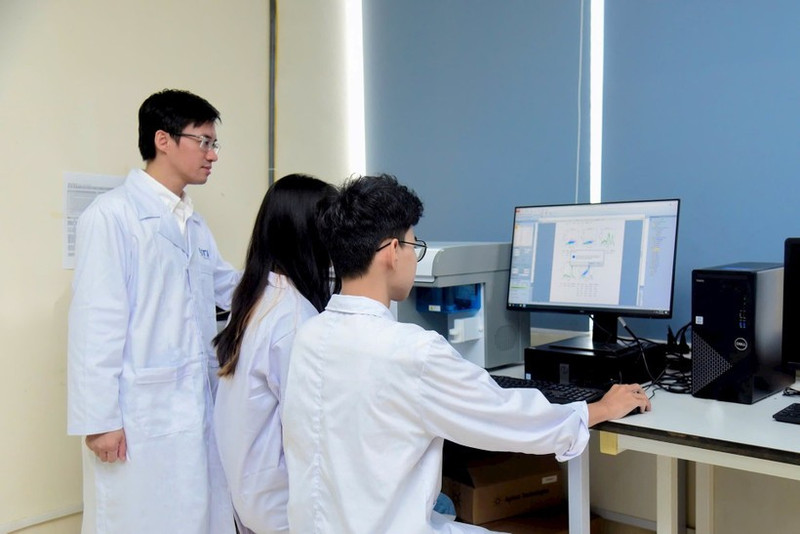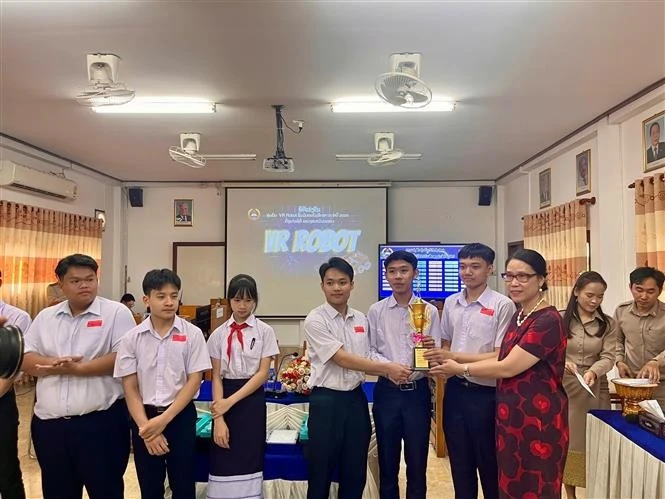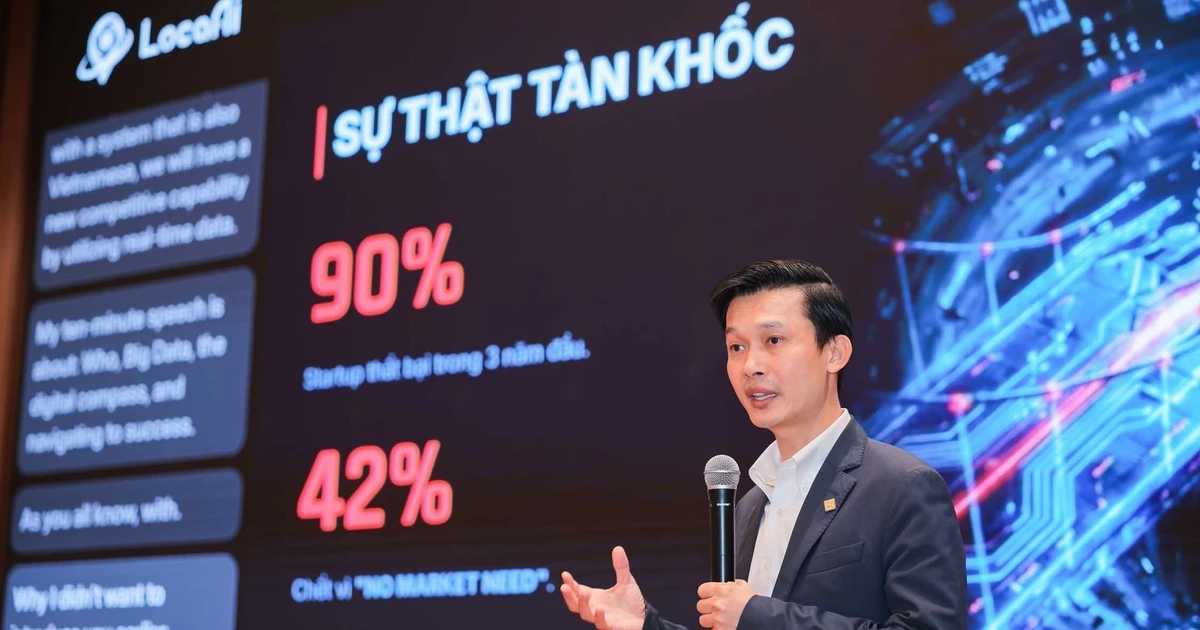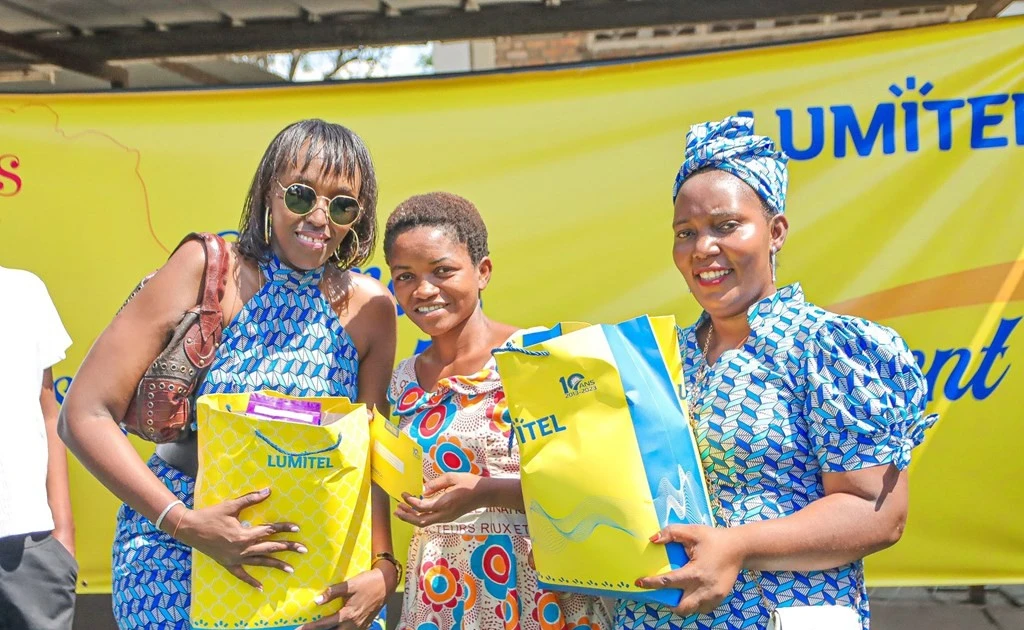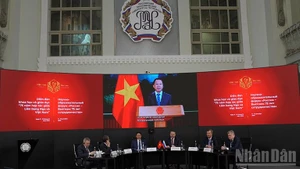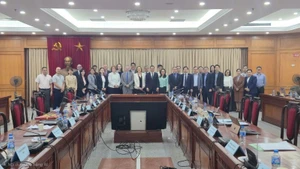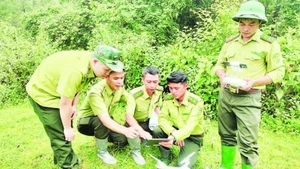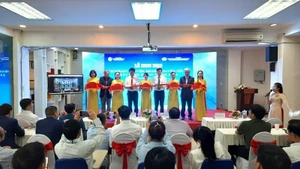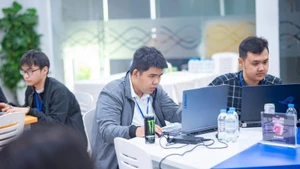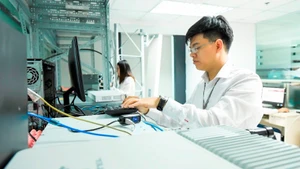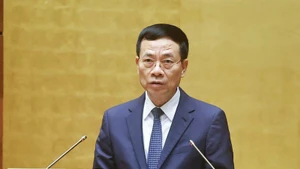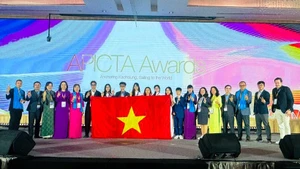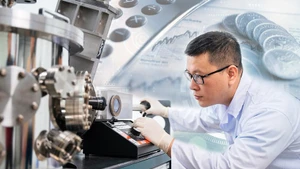Today's scientists do not only stop at research but also carry the mission of inspiring and leading the young generation to engage in science and technology with a spirit of creativity and international integration.
Resolution No. 57-NQ/TW on December 22, 2024 of the Politburo on breakthroughs in development of science, technology, innovation and national digital transformation emphasises that high-quality human resources are key to innovation and sustainable development. With their responsibility in teaching, many scientists have been playing the role of guides, inspiring critical thinking and a spirit of research for the next generation.
Assoc. Prof. Dr. Dang Thi My Dung, Deputy Director of the Institute of Nanotechnology (Viet Nam National University, Ho Chi Minh City) - one of two outstanding female scientists who have just received the Kovalevskaia Award 2024 - is not only a talented scientist but also a dedicated teacher.
She has guided undergraduate, graduate and postgraduate students, particularly encouraging female researchers to pursue careers in science and technology. Beyond guiding research topics, seeking scholarships, supervisors and laboratories for young people, she has facilitated partnerships to send students and staff for Master’s and PhD training in the Republic of Korea, and brought dozens of PhD candidates and interns to partner institutions in the US, France, the Netherlands, Japan, etc.
However, to fulfil this role of “igniting passion”, scientists still face many barriers: a lack of equipment, limited funding, and research environments that do not meet international standards. Many research facilities in Viet Nam do not have the conditions to create an open, creative and deep-practice academic space for students.
Dung shared that scientific research requires large investments in equipment, facilities, finance and time. Meanwhile, many training and research facilities in Viet Nam have limited conditions, creating an international standard learning and research environment for students and young researchers which still has many obstacles.
Many scientists have also pointed out that Viet Nam lacks deep specialists; the number of lecturers and researchers is insufficient to cover all the strategic technology fields. This poses difficulties in designing training programmes that are well-structured and meets international standards.
Additionally, there is a lack of orientation and support to send top students abroad for study and research, while selection and support mechanisms from the state or universities are sometimes ineffective.
According to Assoc. Prof. Dr. Nguyen Hai Dang, Vice Rector of the University of Science and Technology of Ha Noi, around 20% of the university's students are enrolled in strategic technology sectors such as biotechnology, biomedicine, pharmacy, and pharmacy. In addition to participating in research with lecturers at the university, over 20% of students every year undertake internships at overseas research institutions. This offers them valuable opportunities to engage with advanced scientific systems, exchange ideas, and improve international collaboration skills.
However, investment in training high-quality personnel remains limited, especially in funding for applied research and modern equipment, hindering access to cutting-edge technologies. Many academic programmes still lack integrated applied research projects or business cooperation, leaving students underprepared for real-world problem-solving. In the field of biotechnology, this situation is even more evident due to the high demand for specialised laboratories, expensive equipment and a team of lecturers with international experience.
Tong Si Son, Deputy Head of the Department of Space and Applications, University of Science and Technology of Ha Noi, shared that space science and satellite technology are interdisciplinary sciences, requiring a combination of experts in astrophysics, mechanics, electronics, automation, information technology, etc., but in reality, there is still a shortage of lecturers and scientists in these areas. Moreover, core technologies in satellite manufacturing and space monitoring are often rarely shared by developed countries. In addition, space technology requires modern, high-cost equipment, from simulation laboratories, remote sensing equipment, ground stations, satellite models to satellite data analysis software. Many domestic universities and research institutes are still unable to fully equip themselves, making teaching impractical and uninteresting.
In the new context, training human resources for strategic technology fields such as biotechnology, aerospace, and semiconductors is not only a priority but also a vital requirement to keep up with global trends. These fields have the potential to transform healthcare, agriculture, environmental protection and national defence. According to experts, it needs a systematic, long-term strategy to build a team of young, high-quality human resources.
Assoc. Prof. Dr. Nguyen Minh Tan, Director of the Institute for Research and Application of Natural Compounds (Ha Noi University of Science and Technology) said that attracting young people to participate in research groups and carry out projects at different levels is not only an opportunity for them to experience reality but also to identify their strengths, discover their passions and define their career goals clearly; thereby choosing prestigious universities and laboratories suitable for their personal development orientation.
In that journey, the role of lecturers and scientists is extremely important, they must become excellent models of research and innovation. Scientists need to build strong international research cooperation networks to open the door to exchange, study and research in a top international environment for students.
To send excellent students abroad to study and research, research institutions need to strengthen cooperation with regional and international partners through research cooperation projects, inviting foreign experts to participate in implementing topics and projects here in Viet Nam.
In addition, an indispensable focus is training human resources for strategic technology fields, especially biotechnology, space technology, and semiconductors. These fields have the potential to revolutionise many economic sectors such as agriculture, healthcare and environmental protection, but requires systematic investment from higher education. Universities need to focus on designing training programs that integrate theory and practice.
At the same time, it is necessary to promote postgraduate training to create experts capable of leading high-tech projects and imparting knowledge to the next generation. There needs to be synchronous coordination between the state, universities and businesses, from adjusting financial mechanisms, increasing infrastructure investment to building training standards suitable with industry needs.
